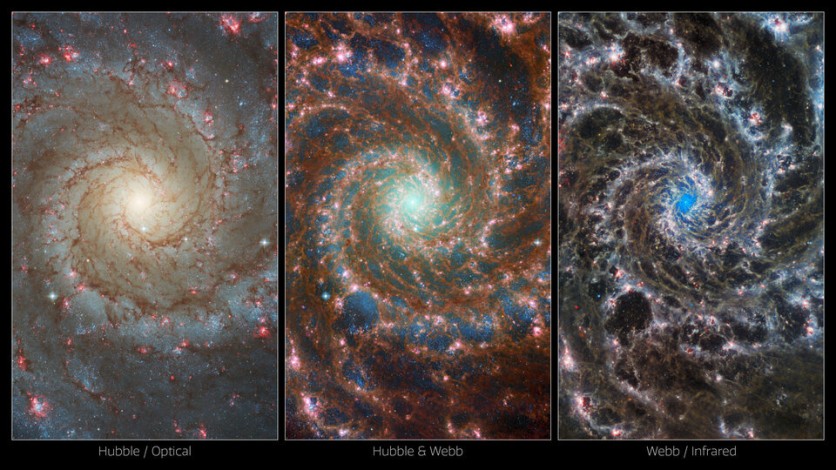Gaze through the glowing heart of the "grand design spiral" Phantom galaxy, and you might find yourself lulled into a deep, enchanting cosmic dream.
NASA James Webb Telescope's deep and powerful vision made the grandiose spiral arms of M74, which snake outward from the image's center, appear to be made of delicate threads of gas and dust.
The nuclear region's lack of gas also allows for an unobstructed view of the nuclear star cluster at the galaxy's nucleus, as explained by European Space Agency (ESA).

The 'Grand Design' Phantom Galaxy
The Phantom Galaxy is located nearly face-on to Earth in the constellation Pisces, around 32 million light-years from Earth. This makes the galaxy an attractive target for astronomers researching the formation and structure of galactic spirals.
In contrast to the patchy and ragged structure found in other galaxies, M74 is a type of spiral galaxy described as a "grand design spiral," which means that its spiral arms are prominent and well-defined, according to ESA.
Crystal-Clear Webb Photos
With its Mid-InfraRed Instrument (MIRI), Webb observed M74 to gain greater insight into the early stages of star formation in our local universe. The international PHANGS group is making a bigger effort to map 19 neighboring star-forming galaxies in the infrared, which includes these observations.
It is worth noting that the NASA/ESA Hubble Space Telescope and ground-based observatories have already been used to view those galaxies.

With the inclusion of crystal-clear Webb photos at longer wavelengths, astronomers will be better equipped to pinpoint star-forming regions in galaxies, precisely assess the masses and ages of star clusters, and discover more about the nature of the minute particles of dust wandering in interstellar space, according to ESA.
HII regions, or unusually luminous zones of star formation, have been identified by Hubble studies of M74. Hubble's razor-sharp vision complements Webb's unmatched sensitivity at infrared wavelengths at ultraviolet and visible wavelengths, as well as observations from ground-based radio telescopes like the Atacama Large Millimeter/submillimeter Array (ALMA).
ESA noted that scientists could learn more about astronomical objects by combining the data from telescopes operating across the electromagnetic spectrum instead of just one observatory.
True enough, what you get is a majestic photo of the Phantom Galaxy.
Related Article : NASA's James Webb Space Telescope Is Set To Capture Dazzling Clouds of Vaporized Gems On Distant Exoplanets
This article is owned by Tech Times
Written by Joaquin Victor Tacla
ⓒ 2025 TECHTIMES.com All rights reserved. Do not reproduce without permission.




